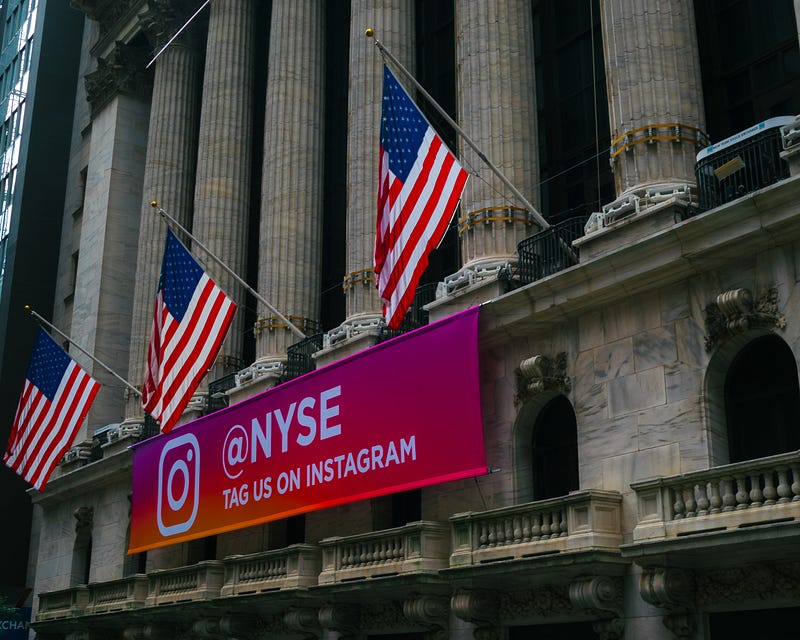Stock market news today: US stocks flat in countdown to Fed: Navigating the Federal Reserve and Market Trends 2023
Navigating the stock market is like riding a rollercoaster, isn't it? The twists and turns keep us on our toes. Today's script reads, "US stocks flat in countdown to Fed," and investors are playing detective, closely examining the bond market for any potential ripple effect on stocks as the Fed's meeting unfolds.
 |
Photo by teleterapia.fi on Unsplash |
The market dance kicks off with a stumble at the opening bell. S&P 500, Dow Jones, and Nasdaq all take a dip, setting the stage for a morning of uncertainty. But hold on, it's not long before these indices regain their composure, trading mostly flat. It's like the market saying, "Gotcha, didn't I?"
Now, let's talk bonds. The US Treasury, waving its wand, cuts its estimate of government borrowing in Q4. A subtle move, but it orchestrates a rally in bonds, providing a breather for stocks. The 10-year Treasury yield takes a graceful slide, around 4.86%. Bond market, you sly fox, always keeping us guessing.
And here's the Federal Reserve, the conductor of this financial symphony. They're dropping hints that the surge in Treasury yields might be pulling the strings in their decision-making. The burning question: steady interest rates or a dramatic hike? The climax awaits, my friends, and the stage is set for Wednesday's revelation.
Stocks reverse losses, trade flat
Guess what? US stocks pull a magic trick, turning losses into gains. Consumer confidence takes a dip for the third month, but hey, it beats expectations. S&P 500, Dow Jones, and Nasdaq join the flatline dance, while the 10-year Treasury yield takes a subtle retreat. It's a market rollercoaster, and we're hanging on for dear life.
Apple unveils new MacBooks, M3 chips
In the midst of this financial rollercoaster, Apple steps into the ring. They unveil the latest MacBook Pro lineup and updated iMac, featuring the new M3 chips. Price tags? Brace yourself—$1,599 to $2,499. It's a high-stakes bidding war, and Apple's playing the game like a seasoned pro.
Consumer confidence falls for the third straight month
Plot thickening alert! The Conference Board's Consumer Confidence Index takes a hit, but fear not, it outshines Wall Street's expectations. Expectations Index whispers recession, but let's not jump to conclusions. Rising prices, geopolitical tensions—it's a real-life soap opera playing out in the market.
Stocks fall ahead of Fed decision
Hold on tight, folks! Stocks take a dip as we await the Federal Reserve's decision on interest rates. S&P 500, Dow Jones, and Nasdaq show some dance moves with declines, and the 10-year Treasury yield dips subtly. It's the calm before the storm, or is it?
Stock futures edge up as Treasury yields retreat
Surprise, surprise! Stock futures tease us with a potential ascent as Treasury yields take a step back. Dow Jones, S&P 500 futures doing a little victory dance with rises, and the tech-heavy Nasdaq 100 flaunts a flatline gain. The stage is set for a higher open, and we're all eyes on the unfolding drama.
In this whirlwind of financial theatrics, let's talk strategy. It's the Earl framework—Prepare, React, Evaluate, and Plan.
Prepare: Market script unfolding? Get your info game on. Stay tuned to the plot twists, and be ready for that unexpected turn.
React: Market landscape shifting like a kaleidoscope? Be nimble. React on the fly, tweak those strategies, and seize opportunities like a pro.
Evaluate: After each act, take a breather. What worked? What didn't? Learn from the market's dance moves, and polish your steps for the next scene.
Plan: Armed with insights and a refined strategy, plan your next moves. Anticipate the market's dance routine, align your portfolio, and get ready for the grand finale.
In conclusion, the stock market today is a rollercoaster of emotions, with each twist and turn leaving us exhilarated. As we await the Federal Reserve's decision, embrace the uncertainty, ride the waves with the Earl framework, and enjoy the spectacle of the financial markets. The show must go on!
FAQs
Q1: What is the current status of US stocks today?
A: The current status of US stocks can be tracked in real-time through financial news platforms like Yahoo Finance or dedicated stock market trackers.
Q2: How are investors reacting to the bond market in relation to the Fed's meeting?
A: Investors are closely monitoring the bond market for any potential impact on stocks as the Federal Reserve's meeting unfolds. Changes in bond yields can influence investment decisions.
Q3: What events are influencing the bond market and, consequently, stock decisions?
A: Events such as Federal Reserve announcements, economic indicators, and global geopolitical situations can influence the bond market, leading to subsequent effects on stock markets.
Q4: When is the Federal Reserve's meeting, and what are the expectations?
A: The Federal Reserve's meeting schedule is available on their official website. Expectations often revolve around interest rate decisions and monetary policy, impacting financial markets.
Q5: Why is the surge in Treasury yields a focal point for investors?
A: Surges in Treasury yields can signal changes in economic conditions and impact borrowing costs. Investors closely watch these movements for insights into market dynamics.
Comments
Post a Comment